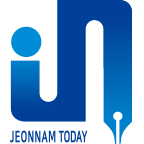
Can renewable electricity now be sold direct to the consumer (in Korea)?
Most households and small businesses have to buy their electricity from a retailer (often known as a distributor), who gets it via the grid. There are some good reasons for this. In most countries, companies that distribute electricity are regulated (for safety reasons), and buying electricity via retailers means consumers don't have to deal with the (expensive) challenges of converting electricity from 275,000 or even 400,000 Volts that the grid uses, down to the 230 Volts we use on our homes. And, making most electricity consumers pay for the grid network, including important functions such as grid stability spreads the cost more widely. And this last aspect is a big deal, which is why the debate in places such as California about solar net metering is getting so 'heated'.

But, there are also disadvantages. If you have direct access your own electricity generation plant, then you probably object to having to pay for all of the other parts of the electricity grid network. For instance, in the UK the direct costs incurred in actually producing the electricity only make up c. 30% of a typical bill. So, for some electricity users, the idea of sourcing their electricity directly are attractive. Which is what some very big electricity users do. But the rest of use normally have to buy via the grid.
According to a report in the Korean press (via google translate) a bill is making it's way through the parliament that would allow certain electricity suppliers to bypass the grid and sell direct to consumers.

Before you get too excited, this is unlikely to result in Korean households avoiding having to pay grid charges. The main application of this is expected to be using renewables plus battery storage (ESS) to supply electricity users such as EV charging stations. Regular readers of our blogs will know that EV charging, especially for trucks and buses, can impose quite serious loads on the grid. Which can require some expensive grid strengthening investment by the grid company. So, it's a change that makes sense for both the EV charging company and the grid operator.
Korea has been testing a simplified version of this system (just using battery storage) since 2020.
And while the Korean plan is not to sell electricity to households, at least not at scale, it's worth tracking. Why? One part of the solution to the challenge of creating 100% renewable grids are what are known as distributed electricity systems. Distributed generation may serve a single building, such as a home or business, or it may be part of a microgrid (a smaller grid that is also tied into the larger electricity delivery system), such as at a major industrial facility, a military base, or a large college campus. Such systems normally still need a regional electricity grid as 'back up', but most of the time they function on a stand alone basis. Which raises the question of who pays for the back up grid?
We have written on something similar before, specifically the importance of electricity storage to enable the full decarbonisation of our electricity production grids. Li Ion batteries look to be the preferred short and medium storage period technology of choice but coping with infrequent low wind/low solar days will need alternative duration solutions.
Link to blog 👇🏾

This article featured in What Caught Our Eye, a weekly email featuring stories we found particularly interesting during the week and why. We also give our lateral thought on each one. What Caught our Eye is available to read in full by members.
If you are not a member yet, you can read What Caught Our Eye when it comes out direct in your email inbox plus all of our blogs in full...


Please read: important legal stuff.




